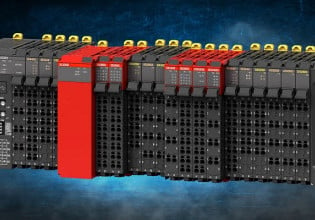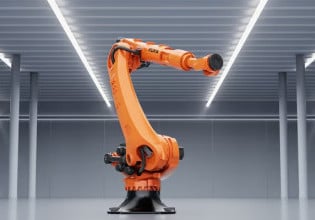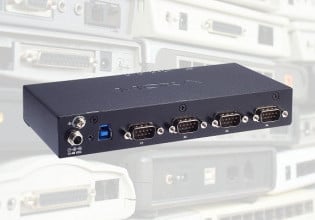The Future of Metal Additive Manufacturing and 3D Printing
As metal additive manufacturing companies find more ways to increase speeds and decrease costs, the innovation behind this technology is continually expanding.
What is metal additive manufacturing? For years, metal additive manufacturing (AM) has been considered too slow or expensive to adopt for different industries, particularly in the industrial sector. It was only for parts that could manage larger price tags or required customization such as in the aerospace and medical industries.
Most metal additive manufacturing is based on a powder bed fusion process such as the following:
- Electron beam melting (EDM)
- Selective laser sintering (SLS)
- Selective laser melting (SLM)

Object printed on a metal 3d printer, created in a laser sintering machine close-up.
This equipment can be expensive and require knowledge and experience to run properly. However, in a 2019 Metal AM survey conducted by the Society of Manufacturing Engineers (SME), 300 AM professionals indicated the biggest barriers to entry were:
- Machine cost
- Funding
- Facilities and overhead costs
- Material costs
Additive Manufacturing Picking Up Speed
One way to justify the cost is by increasing speed. If a machine can improve throughput, it will often increase the equipment’s ROI. Increasing production was one of the drivers in binder jetting; another powder bed process.
Instead of using lasers or beams to sinter or melt material, binder jetting uses a binder agent like traditional powder metallurgical processes. This process was able to reduce costs and increase operational speed. However, binder jetting doesn’t produce parts strong enough for higher load-bearing applications. Additionally, as a powder bed process, binder jetting can limit part size.
OEMs Focusing on Changing Controls, Materials, and Software
Metal AM OEMs are focusing on changing controls, materials, and software to get as much speed and output at lower costs. However, there are a couple of newer technologies that are getting some attention from manufacturers.

3D Printing Powder Experiments with Vader MagnetoJet Technology. Image used courtesy of a screenshot from Vader Systems (Xerox).
MagnetoJet technology and supersonic particle deposition are not powder bed processes. These new technologies help add value and expand metal additive manufacturing.
The MagnetoJet 3D Printing System
Patented by father and son team, Scott and Zack Vader, the metal process sounds like any 2D inkjet printer. In fact, in a presentation, Vader Systems says that an inkjet printer was the idea behind its design. While inkjet printers might use piezoelectrics to create mechanical pressure in a vat or cartridge to produce a droplet, Vader uses induction heating to melt materials and control pressure.
To keep cost low, Vader uses a standard metal wire feedstock. This avoids the facility and operation costs of proper ventilation and handling associated with metal powders. Additionally, using metal wire reduces the cost of material of specialty powders by 96% according to a source.
The company was noticed at the International Manufacturing Technology Show (IMTS) in 2016, and delivered its first printer, the MK1 complete with Siemens control panel, to RIT the same year. Since then, the company continued to work with industry and education partners to bring this machine to market. The new printer has already tested multiple materials and is getting attention from the medical, aerospace, and automotive industries. In 2019, Vader Systems was acquired by Xerox. They plan to continue to grow and expand the metal additive manufacturing market with this technology from Vader.
Supersonic Particle Deposition
Also called cold spray, or supersonic 3D deposition, this process is a powder process, but the material is blown through a nozzle, not leveled across a bed. Other processes use blown powder with a laser to melt materials layer by layer. But the supersonic method accelerates powdered particles at such velocities that the energy of the impact welds the powder to the object in which it collides.
In a book titled Aircraft Sustainment and Repair, published in 2018, it states, “It has been well established that impacting particles must exceed the ‘critical velocity’ to deposit otherwise they may rebound off of the substrate. The magnitude of the critical velocity can be estimated through the use of empirical relationships, which generally depend on particle material characteristics, such as density, ultimate strength, yield, and melting point as well as the particle temperature.”

A diagram of the cold spray process used in additive manufacturing. Image used courtesy of Aircraft Sustainment and Repair.
SPEE3D, a company that develops 3D printing processes for metals, demonstrated how this process can accelerate particles three times the speed of sound to make objects quickly. At FormNext 2019, SPEE3D was able to build a copper 2.2-pound hammer in about 10 minutes. While parts can be made with supersonic particle deposition (SPD), one of the reasons this process is getting so much attention is its ability to repair parts.
In the book, Aircraft Sustainment and Repair, it states, “The SPD coupons were tested at three remote stress peak stress levels, viz: 150, 120 and 80 MPa... This was done to evaluate the fatigue performance as well as the failure mechanisms of the SPD repaired coupons.”
The test performed at 150 and 120 MPa showed that the SPD repairs more than double the minimum life of the specimen. The specimen tested at 80 MPa didn’t fail and was therefore unable to determine minimum life.
Metal additive manufacturing still requires much knowledge and experience, but from the survey by SME, it is apparent that the main concerns are the cost. With precision controls, software, and new processes, costs are coming down. Companies should be paying attention and educating themselves now as it is no longer a question of if these processes will add value to a company, but when and how.






